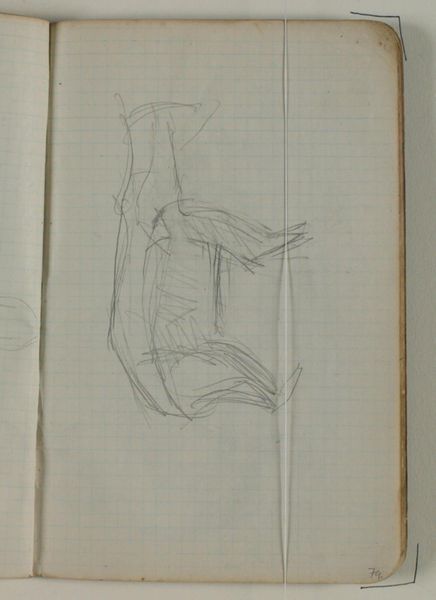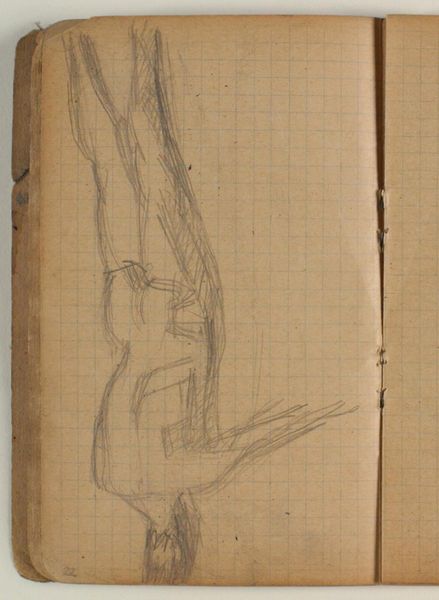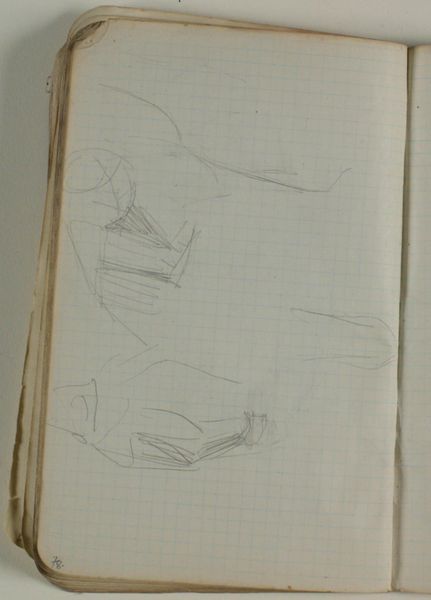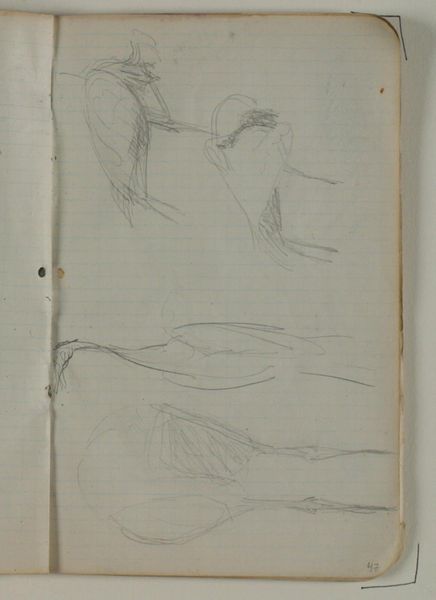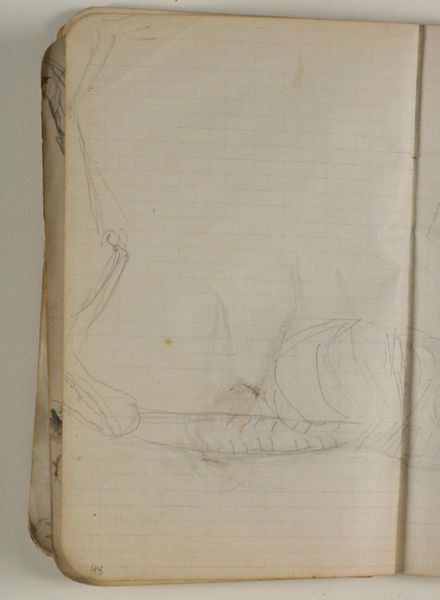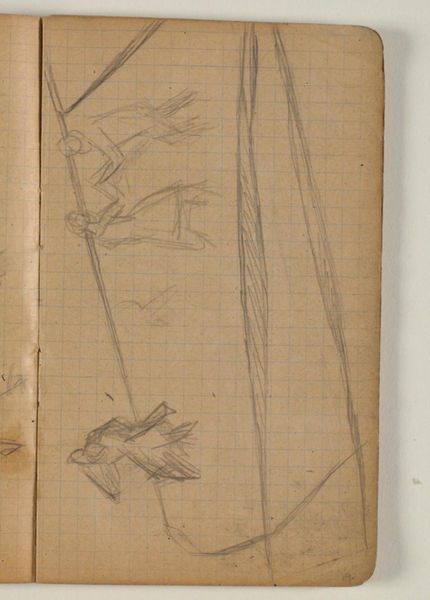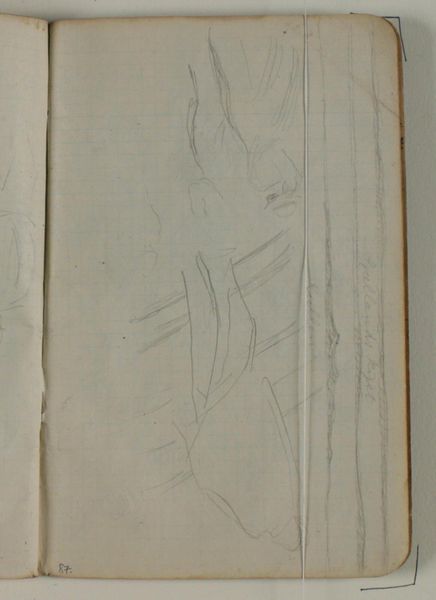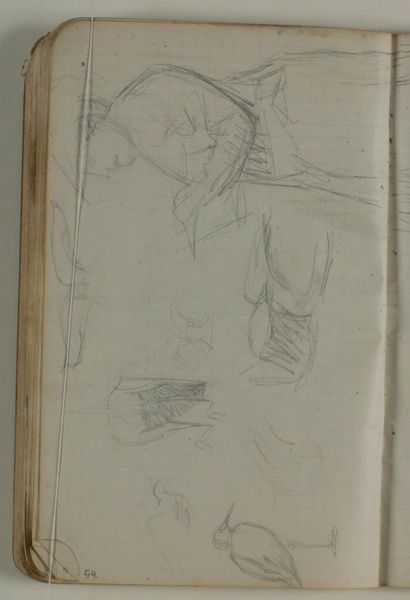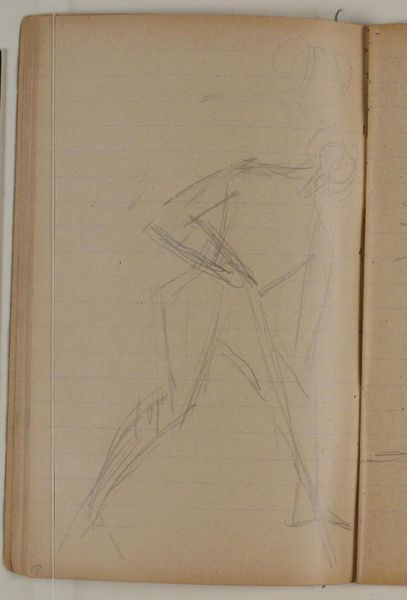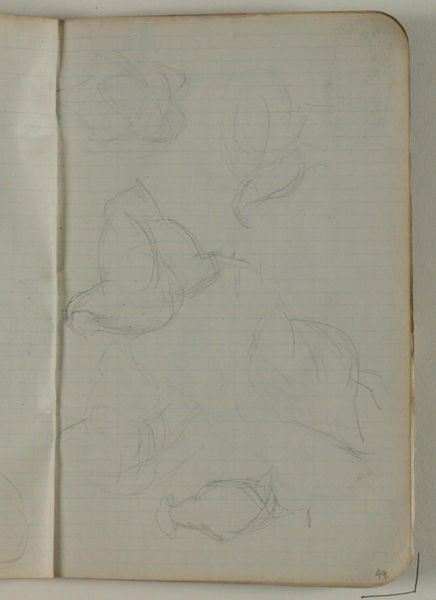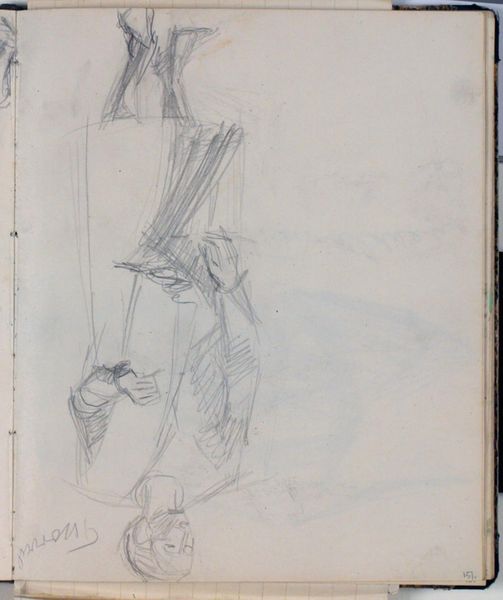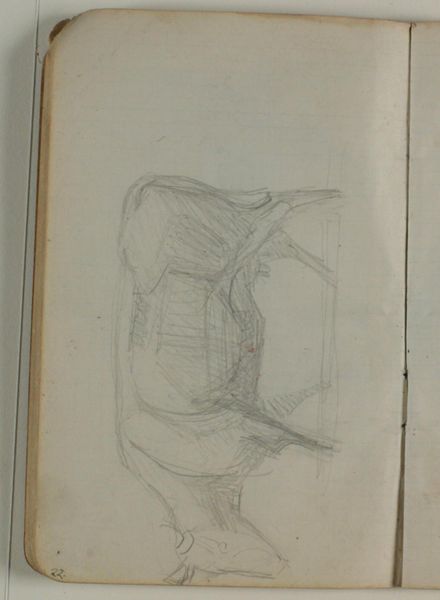
drawing, paper, pencil, graphite
#
drawing
#
landscape
#
figuration
#
paper
#
pencil
#
graphite
Dimensions: 175 mm (height) x 110 mm (width) (bladmaal)
Curator: We’re looking at “Skitser af rådyr,” or “Sketches of Deer,” by Niels Larsen Stevns, likely created between 1900 and 1905. It’s a graphite and pencil drawing on paper, currently held here at the SMK. My initial impression is of raw, unrefined energy. The lines are so spare, almost frantic. What catches your eye first? Editor: It's the vulnerability, almost. These quick sketches reveal the animal in such an intimate, fleeting moment. I’m drawn to considering the socio-political climate of the period, how rural life and encounters with wildlife were perceived and idealized. Was this an act of reverence or a study for something more? Curator: Methodologically, I’m more interested in how Stevns uses line to imply form. Notice the economy of means—how he captures the essence of the deer with such a minimal framework. The strategic use of graphite to build mass, to delineate space...it's masterful in its restraint. Editor: But isn’t that restraint, perhaps, telling? The sketch format itself could reflect a societal constraint, limiting representations of nature and potentially reflecting anxieties about changing landscapes and the human impact upon them. Maybe these tentative lines speak to a deeper cultural uncertainty. Curator: I see it more as the artist’s deliberate choice. The quick lines create movement; the white space on the page, equally active, implying further presence and movement. He could be more involved in mark-making rather than representing a wider scope of what they may imply in the world. Editor: The setting within a sketchbook further complicates the artwork—suggesting an exploration into gendered depictions of nature and leisure. Stevns seems to create images where nature provides solace, while other narratives place emphasis on the male figures occupying landscapes. Here the lines remain unformed and transient. Curator: Perhaps you are trying to read into lines that simply strive to indicate tonal variation, weight distribution and formal volume. These are quick notes taken of observations made outside. Editor: Well, in any case, it seems to hint at the dialogue we are both having now! Curator: Exactly! Its form and substance encourages multiple interpretations.
Comments
No comments
Be the first to comment and join the conversation on the ultimate creative platform.
